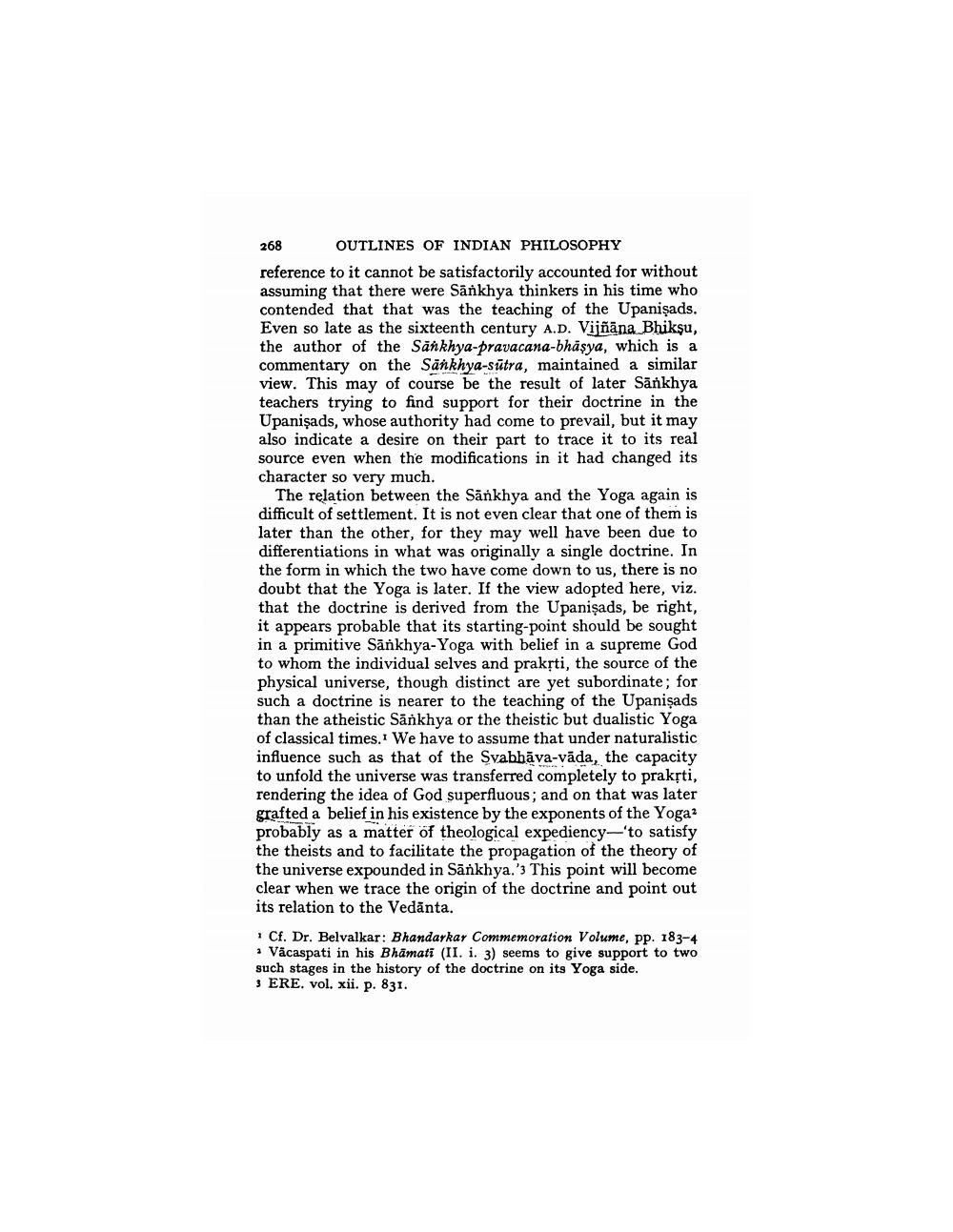________________
OUTLINES OF INDIAN PHILOSOPHY
reference to it cannot be satisfactorily accounted for without assuming that there were Sankhya thinkers in his time who contended that that was the teaching of the Upanisads. Even so late as the sixteenth century A.D. Vijñāna Bhiksu, the author of the Sankhya-pravacana-bhāṣya, which is a commentary on the Sankhya-sutra, maintained a similar view. This may of course be the result of later Sankhya teachers trying to find support for their doctrine in the Upanisads, whose authority had come to prevail, but it may also indicate a desire on their part to trace it to its real source even when the modifications in it had changed its character so very much.
The relation between the Sankhya and the Yoga again is difficult of settlement. It is not even clear that one of them is later than the other, for they may well have been due to differentiations in what was originally a single doctrine. In the form in which the two have come down to us, there is no doubt that the Yoga is later. If the view adopted here, viz. that the doctrine is derived from the Upanisads, be right, it appears probable that its starting-point should be sought in a primitive Sankhya-Yoga with belief in a supreme God to whom the individual selves and prakṛti, the source of the physical universe, though distinct are yet subordinate; for such a doctrine is nearer to the teaching of the Upanisads than the atheistic Sankhya or the theistic but dualistic Yoga of classical times. We have to assume that under naturalistic influence such as that of the Svabhava-vāda, the capacity to unfold the universe was transferred completely to prakṛti, rendering the idea of God superfluous; and on that was later grafted a belief in his existence by the exponents of the Yoga2 probably as a matter of theological expediency-'to satisfy the theists and to facilitate the propagation of the theory of the universe expounded in Sankhya.'3 This point will become clear when we trace the origin of the doctrine and point out its relation to the Vedanta.
268
1 Cf. Dr. Belvalkar: Bhandarkar Commemoration Volume, pp. 183-4 a Vacaspati in his Bhamati (II. i. 3) seems to give support to two such stages in the history of the doctrine on its Yoga side. 3 ERE. vol. xii. p. 831.




